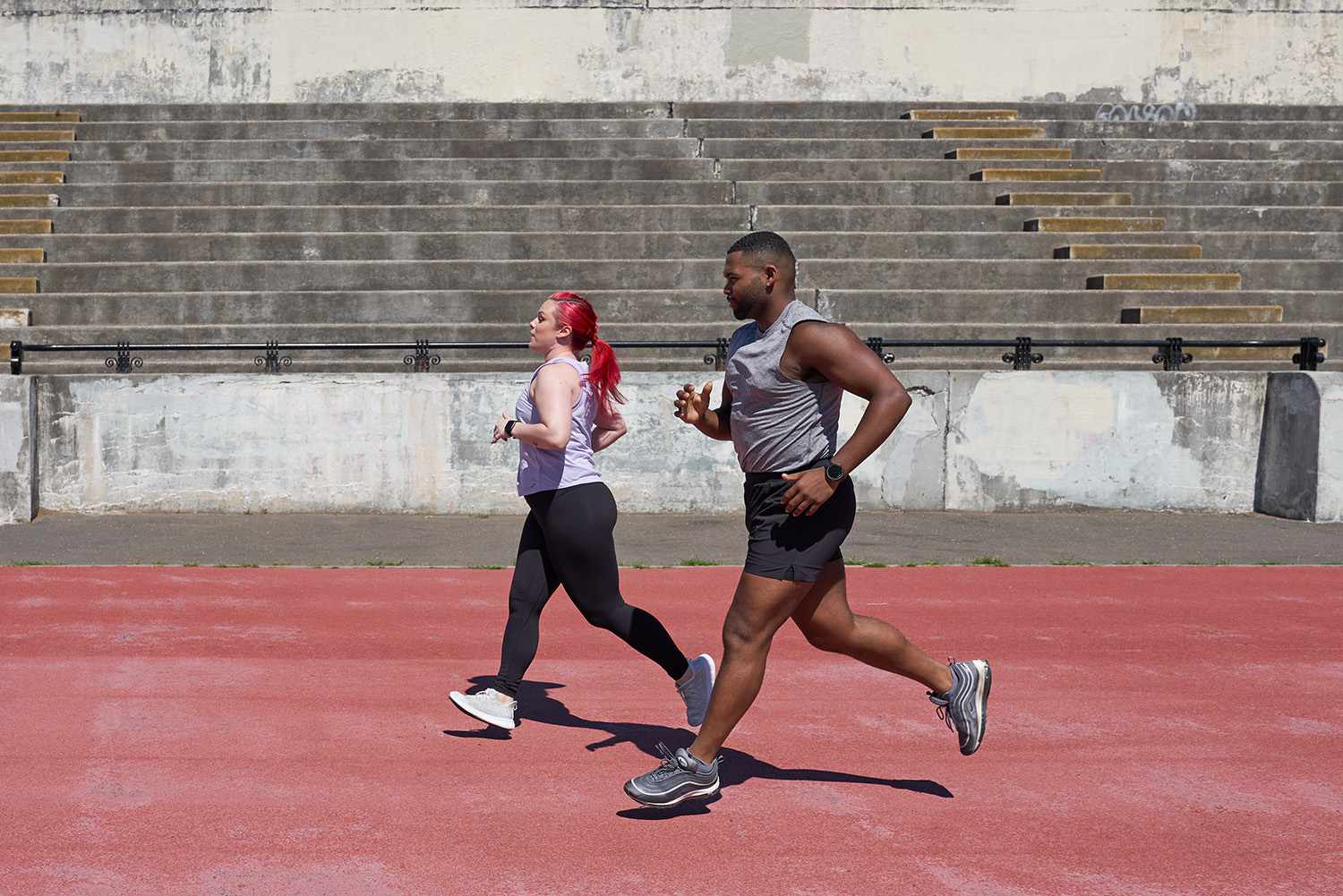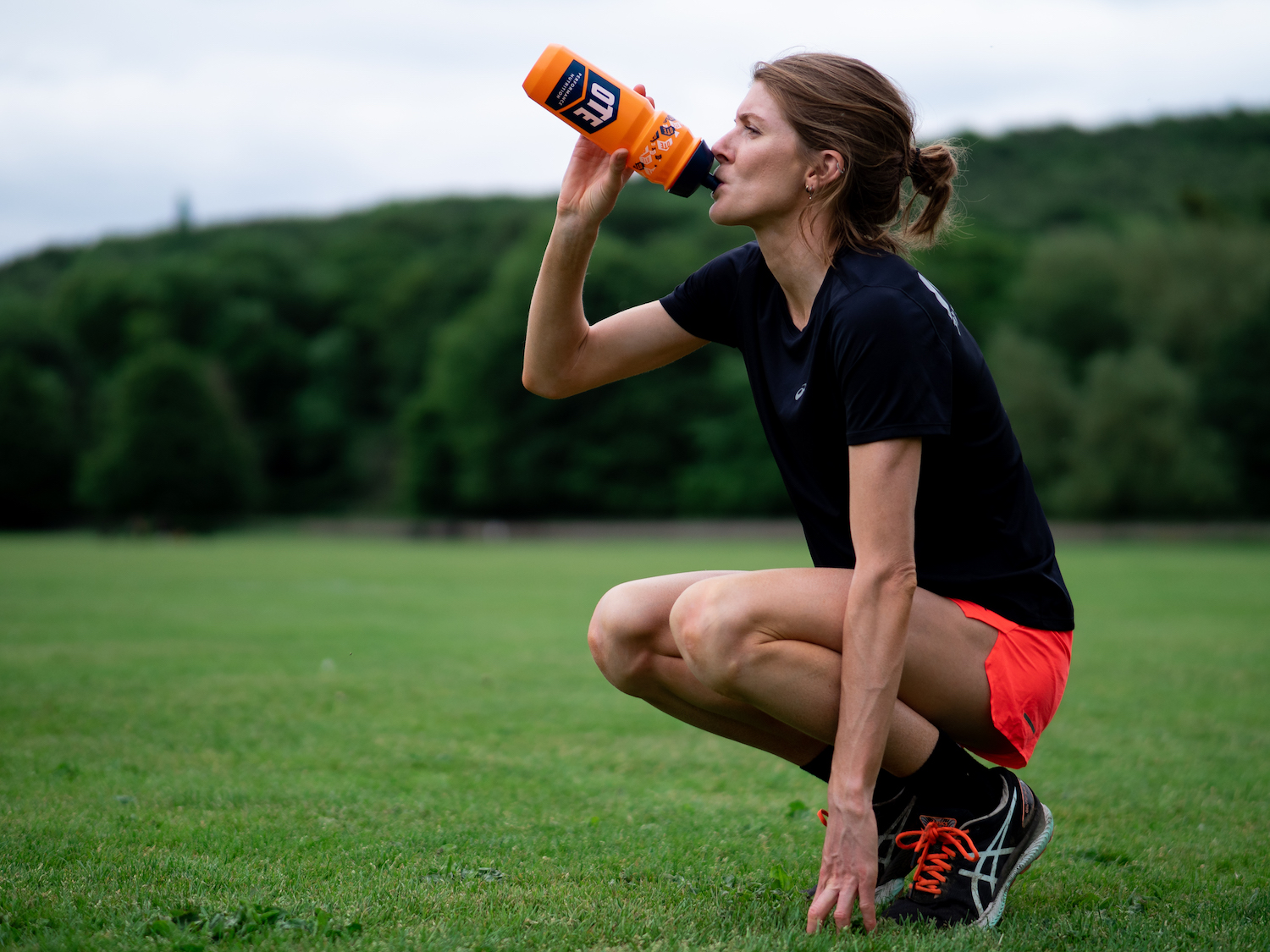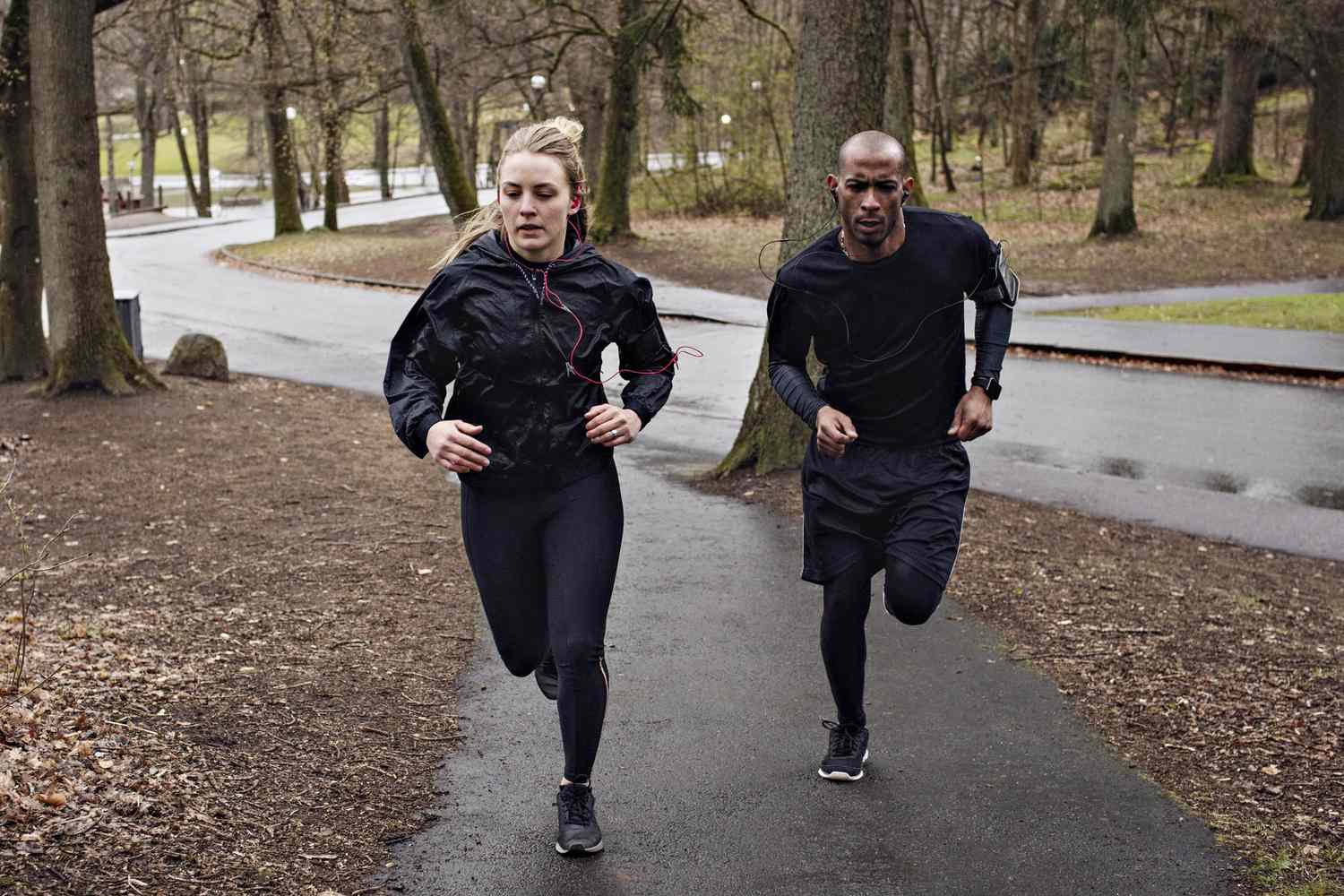

Featured
How Many Steps In A 10K Run
Modified: January 22, 2024
Join our featured 10K run and discover how many steps it takes to reach the finish line. Challenge yourself and embrace the joy of running!
Introduction
Welcome to the world of running! If you’re looking to challenge yourself and take your fitness to the next level, participating in a 10K run is a fantastic option. Not only does it provide a significant physical and mental challenge, but it also offers a sense of accomplishment and a great opportunity to connect with other runners.
A 10K run, also known as a 10-kilometer run, is a popular distance for both beginner and experienced runners. It measures approximately 6.2 miles, making it an attainable goal for those who have already built up some running endurance. With the right training and preparation, anyone can cross the finish line of a 10K run.
In this article, we will guide you through the process of preparing for and completing a 10K run. We’ll cover essential topics such as setting a training schedule, warming up and cooling down, tracking your steps, and providing tips to help you succeed in your race. Whether you’re a seasoned runner looking to improve your performance or a novice taking on your first race, we’ve got you covered.
Before we dive into the details, it’s important to note that running a 10K requires commitment and effort. It’s not something that can be achieved overnight. You’ll need to put in the time and effort to train, build your endurance, and push through any challenges that come your way. But trust us, the feeling of crossing that finish line is worth every step of the journey.
So, lace up your running shoes, grab your water bottle, and let’s get started on this exciting journey towards conquering a 10K run!
Understanding the 10K Run
Before embarking on your 10K training journey, it’s crucial to have a solid understanding of what exactly a 10K run entails. As mentioned earlier, a 10K run is a distance of approximately 6.2 miles. It’s a common race distance that attracts participants of all fitness levels.
One of the reasons the 10K run is so popular is because it strikes a balance between being challenging yet attainable for many individuals. It’s long enough to provide a significant endurance test, but not as daunting as a half marathon or marathon. Participating in a 10K run is a great achievement for beginners and serves as a stepping stone to longer distances for more experienced runners.
10K races are held in various settings, including city streets, parks, and even trails. The courses are typically well-marked and supported with hydration stations along the way. There is usually a festive and energetic atmosphere, with spectators cheering on the participants and providing a boost of motivation.
It’s essential to note that while the 10K run can be physically demanding, it’s also a highly enjoyable and rewarding experience. It offers an opportunity to challenge yourself, experience the thrill of a race, and enjoy the camaraderie of fellow runners. Whether you’re aiming for a personal best time or simply want to have fun, the 10K run is a fantastic event to be a part of.
Additionally, participating in a 10K run can bring various health benefits. Running has proven benefits for cardiovascular fitness, weight management, and mental well-being. The 10K distance allows you to push yourself, elevate your heart rate, and improve your overall fitness level.
So, now that you have a better understanding of what the 10K run entails, it’s time to dive into the necessary steps to prepare for this exciting challenge. In the next section, we will discuss how to create a training schedule that suits your fitness level and goals.
Preparing for a 10K Run
Preparing for a 10K run requires careful planning and physical preparation. Whether you’re a beginner or an experienced runner, it’s important to approach your training with a structured approach to ensure you’re both physically and mentally prepared for the race.
The first step in preparing for a 10K run is to assess your current fitness level. If you’re new to running, it’s recommended to start with a Couch to 5K program to gradually build up your endurance. This program typically takes 8-10 weeks and helps you transition from a sedentary lifestyle to running a continuous 5K (3.1 miles).
Once you can comfortably run a 5K distance, you can begin focusing on training specifically for the 10K distance. The key is to gradually increase your mileage and incorporate different types of runs into your training plan, such as long runs, tempo runs, interval training, and rest days for recovery.
When it comes to choosing a training schedule, there are plenty of resources available online, including beginner-friendly programs tailored for the 10K distance. These programs typically consist of 8-12 weeks of training, gradually increasing mileage and intensity to build your endurance and speed.
It’s important to listen to your body during training and not push yourself too hard. Overtraining can lead to injuries and setbacks. Make sure to incorporate rest days into your schedule to allow your body to recover and rebuild. Cross-training activities like swimming, cycling, or strength training can also complement your running and help prevent overuse injuries.
In addition to the physical training, it’s crucial to pay attention to your nutrition and hydration. Fueling your body with the right nutrients is essential for optimal performance and recovery. Make sure to include a balanced diet consisting of carbohydrates, protein, healthy fats, and plenty of fruits and vegetables.
Hydration is another key aspect of preparation. Before, during, and after your runs, make sure to drink plenty of water to stay hydrated. On longer runs, consider carrying a water bottle or plan your route where you have access to water fountains or hydration stations.
Finally, don’t underestimate the power of mental preparation. Running a 10K requires mental resilience and the ability to push through moments of fatigue or doubt. Develop a positive mindset, set realistic goals, and visualize yourself crossing that finish line. Surround yourself with supportive friends, join a running group, or seek encouragement from fellow runners to stay motivated throughout your training.
With proper preparation, dedication, and a positive mindset, you’ll be well on your way to completing a successful 10K run. In the next section, we’ll discuss the importance of warming up and cooling down to minimize the risk of injuries and enhance your overall performance.
Setting a Training Schedule
Setting a training schedule is a crucial step in preparing for a 10K run. Having a well-structured plan will not only ensure that you build your endurance and strength gradually but also help you stay consistent and motivated throughout your training journey.
The first step in setting a training schedule is to determine the number of days per week you can commit to running. This will depend on your current fitness level, schedule, and personal preferences. Beginners may start with three to four days of running per week, while more experienced runners may opt for five to six days.
Once you’ve established the number of running days, you can divide your training week into different types of runs. A well-rounded training program typically includes a combination of a long run, tempo runs, interval training, and easy runs for recovery.
The long run is the cornerstone of your training. It helps build your endurance and prepares you for running the full 10K distance. Start with a comfortable distance and gradually increase it each week. Aim to add around 10% to your long run distance every week to avoid overexertion and injuries.
Tempo runs are shorter, faster-paced runs that help improve your speed and stamina. These runs should be at a sustainable pace where you can maintain a conversation but feel challenged. Incorporate one or two tempo runs per week, gradually increasing the distance and pace as your fitness improves.
Interval training involves alternating between periods of high-intensity effort and recovery. This type of training improves your cardiovascular fitness and helps boost your speed. You can do intervals on a track, using a timer or landmarks, or even by incorporating hills into your run. Start with shorter intervals and gradually increase the duration and intensity over time.
Finally, easy runs are essential for recovery and to provide a lighter day of running. These runs should be at a comfortable, conversational pace. They help promote recovery, enhance blood flow, and prevent burnout. Don’t be tempted to push the pace on these days; the focus is on active recovery.
When setting your training schedule, it’s important to include rest days. Rest days allow your body to recover and adapt to the training stimulus, reducing the risk of injuries and burnout. Use these days to cross-train or engage in activities that support your overall fitness and well-being.
Remember, it’s crucial to listen to your body during training. If you’re experiencing excessive fatigue, soreness, or pain, adjust your training schedule accordingly. Pushing through when your body needs rest can lead to injuries and setbacks.
Additionally, consider incorporating flexibility and strength training exercises into your weekly routine. These activities help improve your overall strength, stability, and flexibility, reducing the risk of injuries and enhancing your running performance.
Setting a training schedule will keep you accountable and ensure that you progress steadily towards your 10K goal. Adapt the schedule as needed, celebrate milestones along the way, and stay consistent. With a well-rounded and structured training plan, you’ll be well on your way to completing your 10K run.
Warming Up and Cooling Down
Warming up and cooling down are essential elements of a successful 10K run. These pre- and post-run routines help prepare your body for exercise, improve your performance, and aid in recovery. They should be incorporated into every training session to reduce the risk of injuries and enhance your overall running experience.
A proper warm-up before your run helps increase your heart rate, circulation, and body temperature. It prepares your muscles, joints, and cardiovascular system for the upcoming physical activity. A warm-up session typically includes dynamic stretching exercises, light jogging, and some mobility drills.
Start your warm-up with a few minutes of light jogging or brisk walking to gradually increase your heart rate and get your blood flowing. This helps elevate your body temperature and prepares your muscles for the upcoming stress of the run.
After the initial light jogging, incorporate dynamic stretching exercises. Dynamic stretches involve moving your limbs through a full range of motion to activate and warm up the muscles. Examples include leg swings, arm circles, high knees, and walking lunges.
In addition to dynamic stretches, consider incorporating mobility exercises that target specific areas of your body, such as hip openers or shoulder rolls. These movements help improve joint mobility and increase range of motion.
The warm-up phase shouldn’t be rushed. Allow yourself 10-15 minutes to properly warm up your body before starting your run. By doing so, you’ll enhance your performance, reduce the risk of muscle strains and injuries, and mentally prepare yourself for the upcoming run.
On the other hand, cooling down after your run is equally important. The cool-down phase helps your body gradually return to its pre-exercise state, and it aids in recovery by reducing muscle soreness and promoting optimal healing.
A cool-down can include a combination of light jogging or walking to gradually lower your heart rate and bring your breathing back to normal. This period allows your body to gradually transition from intense exercise to a resting state.
After the light cardio component, take a few minutes to perform static stretches. Focus on the major muscle groups used during your run, such as the calves, hamstrings, quadriceps, and hip flexors. Hold each stretch for 15-30 seconds, breathing deeply and relaxing into the stretch.
Cooling down with static stretches can help improve flexibility, reduce muscle tension, and prevent post-run stiffness. It’s an excellent opportunity to reflect on your run, mentally wind down, and embrace a sense of accomplishment.
Don’t underestimate the importance of warming up and cooling down. These routines are vital for injury prevention, performance enhancement, and overall recovery. So, make them an integral part of your 10K training plan, and your body will thank you.
Tracking Your Steps
Tracking your steps is a valuable tool when it comes to monitoring your progress and staying motivated during your 10K training. It provides valuable insights into your running habits, helps you set goals, and allows you to track your improvement over time.
There are several ways to track your steps, depending on your preference and the technology you have available. One of the most popular methods is using a GPS running watch or a fitness tracker. These devices can accurately measure your distance, pace, and even heart rate, providing a comprehensive overview of your running metrics.
If you prefer a simpler approach, smartphone apps can also serve as effective tools for tracking your steps. Many running apps offer GPS tracking features and allow you to sync your workouts across multiple devices.
No matter which tracking method you choose, the information you gather can be used to set goals and track your progress. For example, you can aim to increase your weekly mileage gradually or focus on improving your pace over a specific distance.
Tracking your steps also allows you to identify patterns and gain insights into your running habits. Are you more consistent in the morning or in the evening? Do you perform better on certain routes or terrains? Analyzing this data can help you optimize your training and make informed decisions.
Additionally, tracking your steps can provide a sense of accountability and motivation. Seeing visual representations of your progress, such as distance covered or calories burned, can be incredibly satisfying and help drive you forward. Many tracking apps and devices also offer features such as challenges, badges, and virtual races, adding an element of fun and friendly competition to your training.
It’s important to remember that while tracking your steps can be helpful, it’s not the only measure of success. Listen to your body, pay attention to how you feel during your runs, and celebrate the non-quantifiable achievements, such as increased energy levels or improved mental well-being.
Lastly, don’t forget to acknowledge the importance of rest days and recovery. Tracking your steps should be seen as a tool to guide and motivate your training, rather than an obsession. Resting and allowing your body time to recover are crucial components of a successful training program.
So, whether it’s through a fitness tracker, a smartphone app, or a good old-fashioned running log, tracking your steps can provide valuable insights and aid in your 10K training journey. Embrace the technology and enjoy the process of monitoring your progress and celebrating your achievements.
Tips for Completing a 10K Run
Completing a 10K run is an exciting and rewarding accomplishment. To help you make the most of your racing experience, we have compiled a list of tips to ensure a successful and enjoyable journey to the finish line.
- Set realistic goals: Before you start your training, set realistic and achievable goals for your 10K run. Whether it’s to complete the race within a certain time frame or simply to cross the finish line, having a clear goal in mind will help you stay focused and motivated throughout your training.
- Follow a training plan: Having a structured training plan is crucial for preparing your body and mind for the 10K distance. Make sure to choose a plan that suits your fitness level and gradually increases your mileage and intensity over time. Stick to the plan but also listen to your body and make adjustments as needed.
- Practice proper nutrition: Fueling your body with the right nutrition is essential for optimal performance. Prioritize a balanced diet that includes a mix of carbohydrates, protein, and healthy fats. Experiment with pre-run meals and hydration strategies during your training to find what works best for you.
- Stay consistent: Consistency is key when it comes to training for a 10K run. Make running a regular part of your routine, even on days when you don’t feel like it. Consistent training will help build endurance, improve running form, and give you the confidence to tackle the race.
- Include cross-training: Don’t solely focus on running during your training. Implement cross-training activities such as swimming, cycling, or strength training to improve overall fitness, prevent injuries, and provide a break from running.
- Find a running buddy: Running with a friend or joining a running group can make your training more enjoyable and provide additional motivation. Having a training partner can help keep you accountable, push you to new levels, and make the long runs feel shorter.
- Listen to your body: Pay attention to any aches, pains, or signs of injury during your training. Don’t ignore them and push through; it’s essential to take care of your body and prioritize rest and recovery. Seek professional help if needed to address any issues that arise.
- Practice race day conditions: Familiarize yourself with the race day conditions during your training. If possible, run parts of the race course to get a feel for the terrain and elevation. Also, experiment with your race day gear and nutrition to ensure everything is comfortable and suits your needs.
- Visualize success: Mental preparation is just as important as physical training. Visualize yourself crossing the finish line and feeling the sense of accomplishment. Embrace positive affirmations, develop a race day plan, and stay focused on your goals when the going gets tough.
- Enjoy the journey: Remember that the 10K training journey is about more than just the race day itself. Embrace the process, enjoy the small victories along the way, and celebrate your progress. Running is a journey of self-discovery, so make sure to have fun and soak up the experience.
By following these tips, you’ll be well-prepared to complete your 10K run with confidence and enjoyment. Remember that every runner’s journey is unique, so don’t compare yourself to others. Embrace the challenge, trust in your training, and savor the experience of accomplishing something extraordinary.
Conclusion
Congratulations! You’ve reached the end of this comprehensive guide to preparing for and completing a 10K run. We’ve covered everything from understanding the 10K distance to setting a training schedule, warming up and cooling down, tracking your steps, and essential tips for success in your race.
Embarking on a 10K journey is a significant commitment that requires dedication, perseverance, and the ability to push through challenges. But with the right mindset, proper training, and a supportive network, you can achieve your goal of crossing that 10K finish line.
Remember to start with a realistic training plan tailored to your fitness level. Gradually build up your endurance, incorporate different types of runs, and allow for proper rest and recovery. Pay attention to your nutrition, stay hydrated, and listen to your body throughout the training process.
Don’t forget the importance of warming up and cooling down to prevent injuries and improve performance. Tracking your steps can be a valuable tool for monitoring your progress and staying motivated. Embrace the use of technology or traditional methods to track your training sessions and set achievable goals.
Finally, keep in mind the tips we’ve provided, such as setting realistic goals, finding a training buddy, and enjoying the journey. Running a 10K is not only about the race day itself but also about the personal growth, physical fitness, and mental resilience you develop along the way.
So, lace up your shoes, take the first step, and embark on this transformative journey. Whether it’s your first 10K or another milestone in your running career, remember that every step counts and that you are capable of achieving greatness. Good luck, and enjoy the exhilaration of crossing that 10K finish line!









